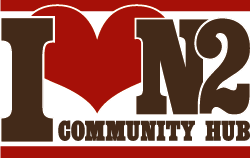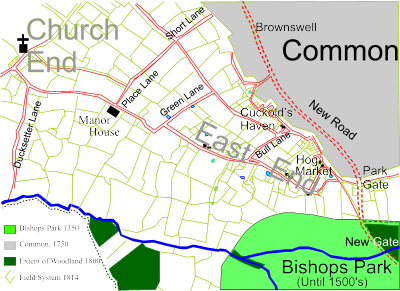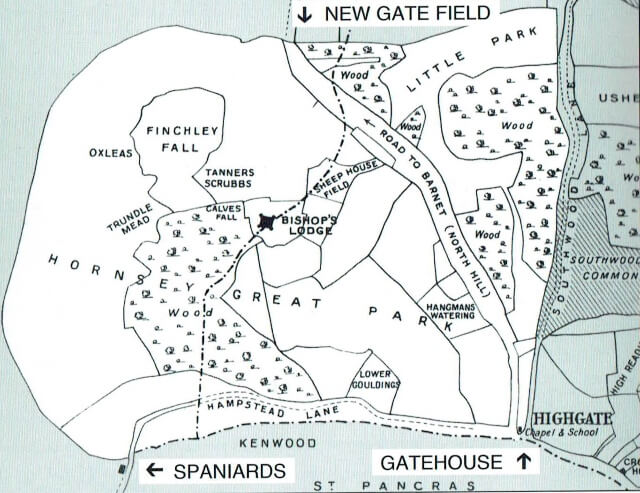Article by Tony Roberts, first published in The Archer, July 1997.
Finchley was firmly on the map by 1199 when King John exempted the Bishop and his tenants within his domain of Finchley from the payment of various taxes.
Settlement had originated at the intersection of Hendon Lane and East End Road, early routes hugging the two main sides of the Finchley triangle. Originally the dense woodland on clay soil yielded wood products – timber and charcoal – and foraging for pigs. As the area was cleared eastwards from the manor house, this yielded to grazing sheep and hay production. The tenancy of the manor by the wealthy Adam de Basing, Tailor and Chief Financier to Henry III, probably accelerated this.
Scattered settlements appeared along East End Road, collectively known as East End. Access to water from the shallow gravel layer allowed many cottages to have their own well. The gravel seams exposed by the south facing slopes of Mutton Brook, would have been attractive for crops. Small settlements grew up along the winding track at the edge of the common, including Cuckolds Haven and Fallow Corner, presumably housing many copy holders, those with rights to make use of the common.
In the 1300’s, the Bishop provided as a business venture, a new toll route though his park, an alternative to the boggy main route to the north along Colney Hatch Lane. It left the park at a new gate, located where the Northern line crosses the High Road today, below the hamlet of Park Gate. The first recorded toll collection was in 1321. Then the road was extended across the Common via Brownswell (by Strawberry Vale), bypassing the East End settlements and rejoining the original route at Whetstone. Now Finchley High Road, this part remained unbuilt on until the Common was developed following enclosure in 1814. The new road improved East End’s opportunities for trade, stimulating the Hog Market and allowing better access to London for the hay and other products. Returning carts carried the soot and manure and gave rise to the “Dirthouse” where the White Lion now stands.
Reproduced by kind permission East Finchley Newspapers CIC
See Highway to The North: The origins of the Great North Road



